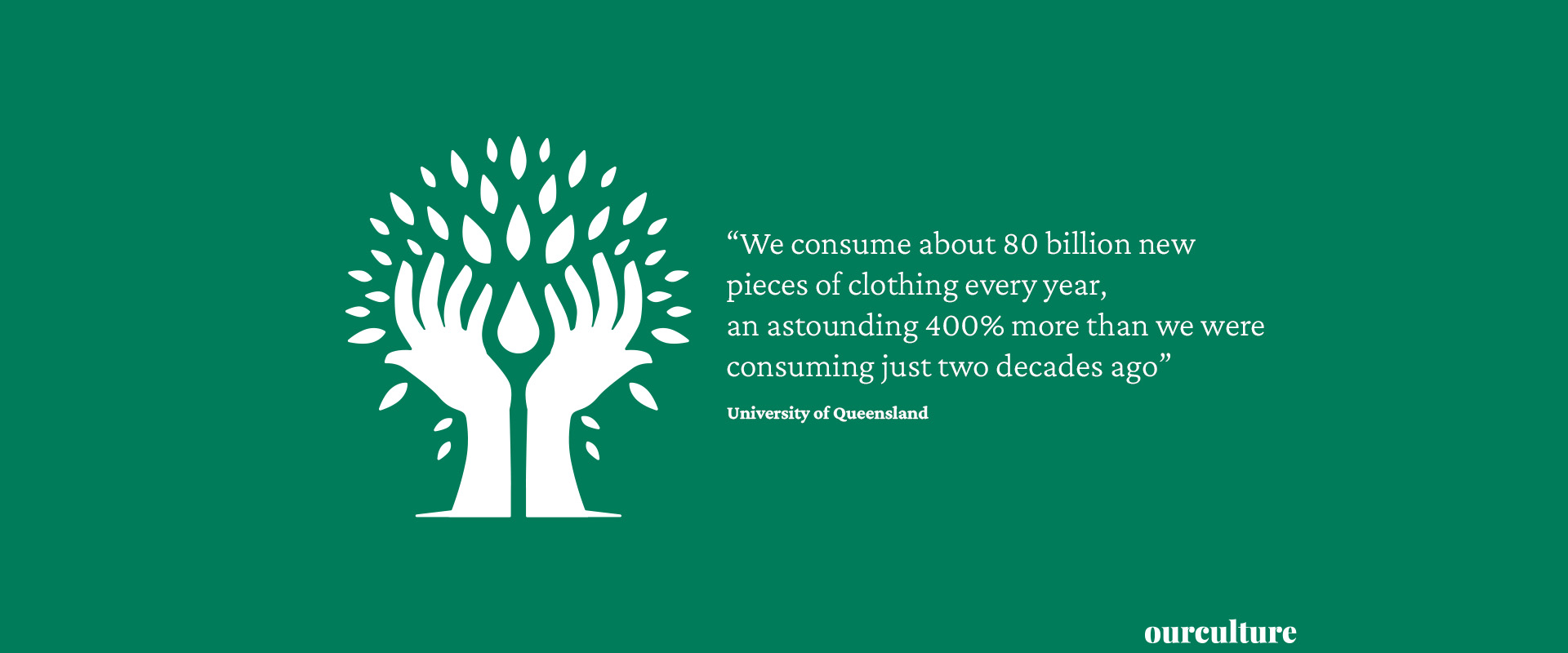In the British Fashion Council annual report 18/19, Stephanie Phair stated that “The U.K. fashion industry contributes £32bn to the British economy”. With fashion being such a giant in our economy and with £140 million worth of clothing going into landfills each year, it is essential to discuss the elephant in the room, fast fashion.
Fast fashion has caused a massive disruption over the years in how consumers evaluate clothes and the cost of making clothes. Fast fashion seems to have only got worse with the presence of e-commerce, especially with new fast fashion labels popping up every minute, advertising their cheap garments via social media to potential unaware consumers.
In this short piece, we discuss fast fashion; it’s impact and the alternative — slow fashion.
Fast Fashion
Fast fashion has gained quite the momentum over the years. The best way to describe it would be trendy and cheap clothing that takes ideas from designer clothing and catwalks and puts it out for the masses for cheap.
What is it and where do you find fast fashion?
The goal of fast fashion is to be quick and cheap in manufacturing, making them ready and available to customers that are looking for affordable and trendy clothing. These stores are straightforward to find as they are the majority of the shops you see in the high street and online. An easy giveaway is the general cost of the items; if something is sold for a couple of pounds, it will likely be part of fast fashion. This set pricing means an item is made for a meagre cost, indicating that workers are underpaid and the quality of the garments are poor.
How does fast fashion impact you and the world?
This way of producing clothing has some positives, but in the long term, do not outweigh the negatives that it provides. The good is the affordability which makes new clothes accessible for the working class.
From a store point of view as soon as an item is out of stock, it is replaced by another new item, which means you can stay on-trend. It is a vicious cycle as fast fashion labels utilise deals with celebrities as catalysts to bring in more money by attracting young, trendy customers to their stores.
On a bigger scale, there are numerous points on how fast fashion negatively impacts the world. Fast fashion has a detrimental effect on the environment and animals. The way fast fashion approaches production destroys ecosystems from the usage of toxic chemicals, which creates toxic waste and severe pollution. Moreover, the fashion industry is the second-largest consumer of water which can cause droughts in areas. Also, with more usage of synthetic materials, more microplastics are being released into the ocean after washes. The worst is that 85% of all textiles go to landfill. Those are just a few examples of how fast fashion is terrible for the environment and us.
It should be added, factories that produce the clothing are known for terrible conditions and lack of care for their workers, consistently breaching health and safety guidelines. Recently, factories in the U.K. have been accused of paying illegal wages and forcing workers to work during the lockdown.
Slow Fashion
Kate Fletcher coined the term slow fashion. She compares the fast fashion movement to the slow food movement; with the comparison, there is a need to slow down the pace of the industry.
What does slow fashion mean, and how can you find it?
Before the industrial revolution, the fashion industry was once slow fashion; it has a similar meaning but is more progressive in approach. The developed concept is that now slow fashion is about sustainability and the ethical values of a brand. Looking for slow fashion brands can be hard to come to by on the high street as they are usually smaller and less known unless you research for sustainable brands via a search engine. Slow fashion labels tend to have garments that are made from high quality, eco-friendly materials that are not just long-lasting but also better for the environment, such as a pair of women’s sustainable shoes that use high quality, regenerative materials that last long, and have timeless looks that match with most pieces. Brands that support slow fashion are typically transparent about their values, and how their items are made; they may also talk about the welfare of the workers involved. They tend to have fewer collection releases in the year and with that, may only have a limited amount of stocks for an item, so once it is gone, it is gone.
How does slow fashion impact you and the world?
The perks of buying from sustainable brands are that many will be transparent about their practices. You know that you are paying for quality and money will likely be re-investing into supporting local farmers and workers. A few may say that they aren’t in the trend, but their purpose is to design something stylish that you will wear and keep for a very long time, something that saves you money long term and doesn’t cause as much pollution. Slow fashion brands thoroughly look into sourcing eco-friendly materials but also sourcing local farmers and manufacturers to support local growth but also to lessen the pollution caused by travel. Slow fashion brands are mindful of all the processes, including the welfare of all their employees. They also think about their consumers, helping them reuse the product multiple times, extending the longevity of the product.
With the current crisis and still many people at home, it is easy to browse the internet and get stuck looking at a sale. Be mindful in what you buy and whether you think you’ll wear it more than once, garbage it the next week, or not wear it at all. So before you shop, research the brands you are buying from and understand the terrible risks of buying from a fast fashion label.


